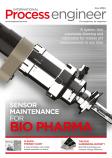Asset management is a big piece of the puzzle amongst asset heavy businesses and having systems in place to control a large number of expensive machines and equipment is the most value-added way for such an enterprise to deal with its maintenance costs and long-term viability.
One way to do exactly that is to implement Condition Based Maintenance (CBM). As an integral part of CBM, condition monitoring is an effective means of controlling assets without having to second guess the possibility of failure in a system, since it is based on real-time feedback and therefore creates a perfect environment for a robust yet easy to operate system.
Before we tackle different condition monitoring techniques, let’s further explore the condition monitoring itself.
What is condition monitoring?
Condition monitoring is an essential part of process engineering, and can be defined as a way of assessing the current state of a system and estimating the potential future condition based on measurements taken. In this manner, data from the present is used to predict the most likely future condition, allowing the operator to make changes to the system as required to maintain the optimum state.
Condition monitoring may be carried out for an array of reasons, but is typically an essential part of damage prevention, increased reliability, reduction in downtime, the carrying out of condition-dependent maintenance, and negating unexpected production outages.
The primary function of any condition monitor system is to compare certain features against pre-determined values or agreed operational limits and output enumerated condition indicators such as level low, level normal,level high. The condition monitoring system may also generate alerts based on defined operational limits such as vibration, temperature use of consumables and highlight when these become excessive.
A properly instigated condition monitoring program provides both the maintenance scheduler and planner the ability to prioritise maintenance work and gives objective feedback of the quality of work that has been carried out. Focusing on only what needs to be maintained with the minimal effect on production offers the greatest opportunity for production availability. In this manner, historical data can be amassed and analysed to identify trends within production equipment and devise a coherent preventive maintenance plan.
Condition monitoring techniques and applications
Condition monitoring processes and equipment covers a huge number of exploratory and assessment techniques. Some of these are carried out remotely, some may be invasive to a degree, but all of them gather real data that can be assessed and acted upon. The most common data gathering methods include the following.
Vibration analysis is generally a non-invasive technique that gathers data via accelerometers fixed to the equipment under review. The vibration signal gives information about the cause of vibration and through its analysis an emerging or developing fault can be detected on rotating or cyclic machines. Once a background scan has been completed, any changes to vibration signatures can be collected and assessed.
Lubricant analysis requires the periodic removal of lubricant from a machine for testing, usually via spectroscopy. Sometimes referred to as Tribo-diagnostics, the analysis is two-fold; monitoring the condition of the lubricant, and analysis of impurities and wear particles suspended within the oil.
Thermography is carried out using local or surface temperature measurements. Sites with different temperature can be determined and the cause of the elevated temperature such as by friction, extraordinary electrical resistance or reduced cooling efficiency, can be deduced. This method is sufficiently accurate to be able to pinpoint specific areas causing the problem, and can be carried out by affixing thermocouples either to the surface or buried within the assembly, or by analysis using an infrared camera.
Motor Current Signature Analysis (MCSA) is the technique used to analyse and monitor the trend of dynamic energised systems. With this method the motor current is sensed by a current sensor with a resistive shunt across its output, and then recorded in alongside a time domain. Micro changes in voltage denote a change in the motor’s conditions, and are usually associated with an impending failure.
Putting it all together
The beauty of many condition monitoring techniques is that they can be left in place and automated to run an alarm if there is a pre-defined change in the results. Vibration and infrared systems in particular can be left to collect data for months or even years and report any potential failure patterns long before they become a real problem.
With more systems running continuously and failure being increasingly disastrous to almost any industry, being able to predict a potential failure means that expensive downtime can be avoided. By developing a robust condition monitoring process – with whatever methods are used – companies can ensure that potential failures are captured long before they endanger their assets.
The author is Bryan Christiansen, founder and CEO at Limble CMMS


















